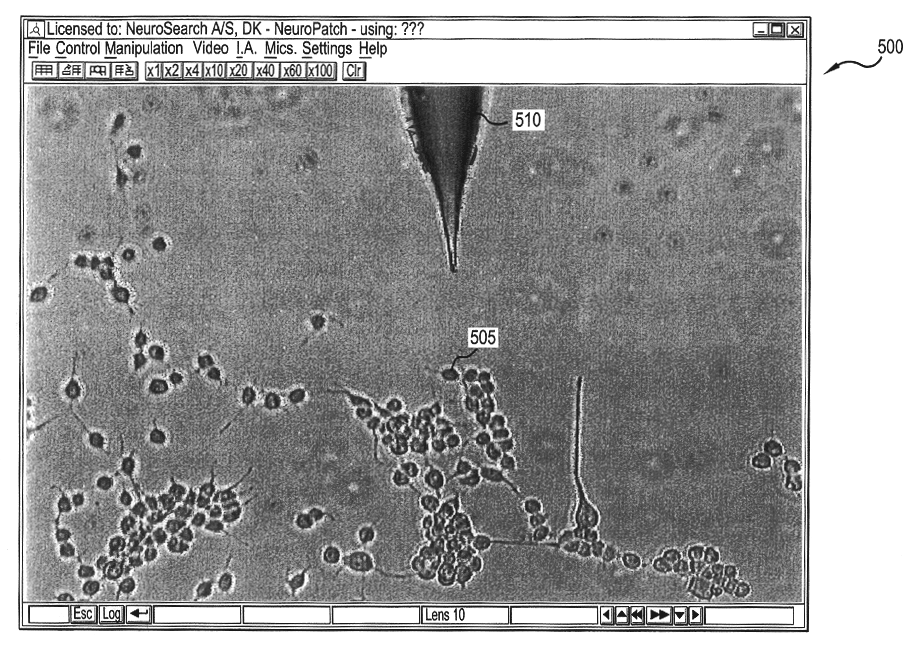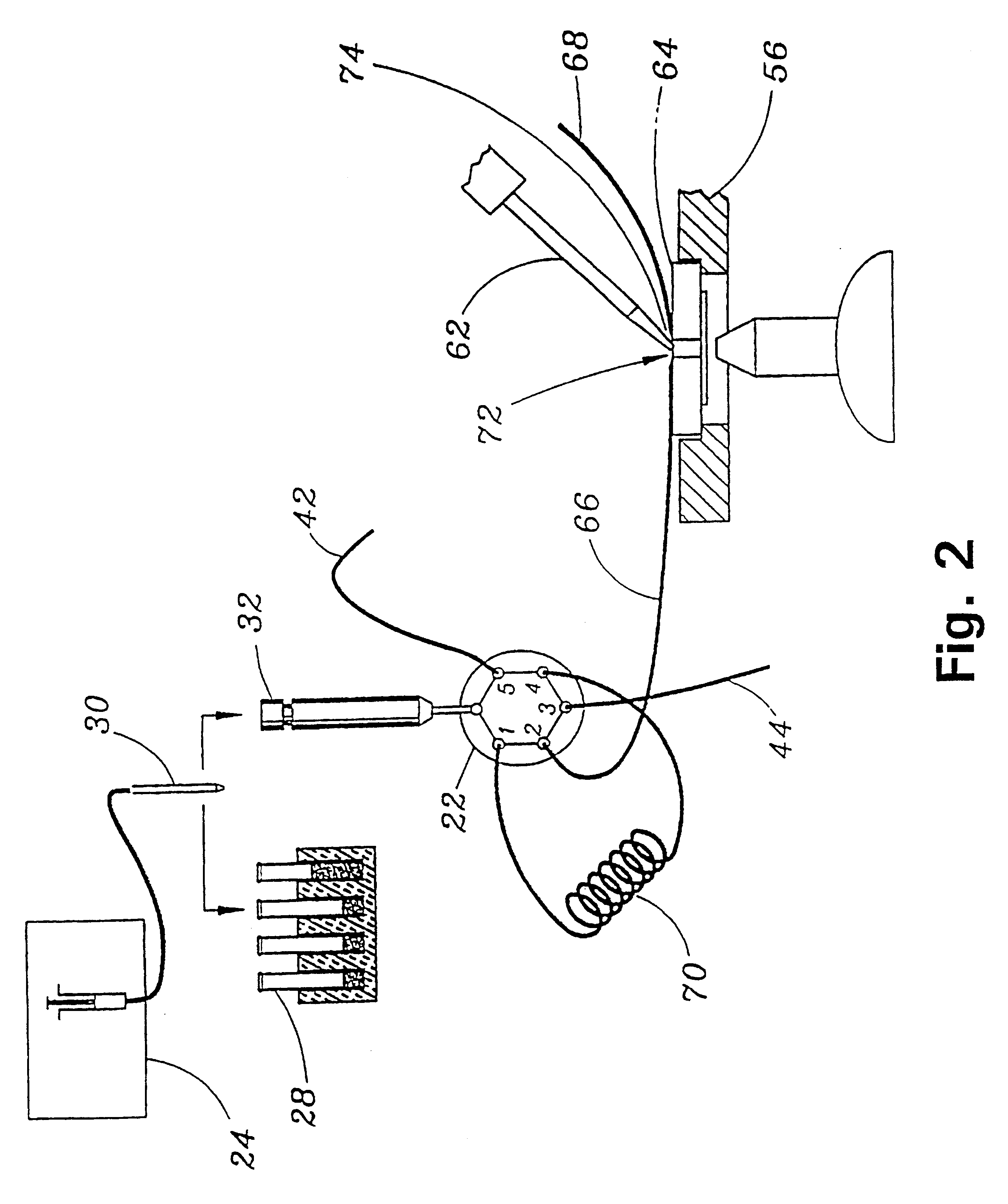Automatic electrode positioning apparatus
a positioning apparatus and electrode technology, applied in the direction of electric programme control, program control, instruments, etc., can solve the problems of limited work, patch clamping technique, limited number of compounds that could be tested per day,
- Summary
- Abstract
- Description
- Claims
- Application Information
AI Technical Summary
Benefits of technology
Problems solved by technology
Method used
Image
Examples
example 2
STOP-FLOW TECHNIQUE: The potassium current of a cultured human coronary smooth muscle cell was determined in an excised inside out patch by the stop- flow technique utilizing an apparatus as disclosed above and diagrammed in FIGS. 7-10, comprising an autosampler, syringe pump, and microperfusion chamber having a volume of 12 .mu.l.
The composition of the pipette and bath solutions was:
Pipette: KCl (140 mM), CaCl.sub.2 (1 mM), MgCl.sub.2 (1 mM), EGTA (1.3 mM), HEPES (10 mM).
Bath: KCl (140 ZuM), CaCl.sub.2 (1 mM), MgCl.sub.2 (1 mM), EGTA from 1.07 mM to 2.0 mM. The free Ca.sup.2+ concentration is determined by the concentration of EGTA. All test compounds were dissolved in bath solution with 0.3 pM free Ca2+.
The effects of 25 unknown compounds on calcium activated potassium channels were tested and reported in FIG. 12. In the experimental protocol, successive unknown compounds (open circles) were perfused (300 .mu.l) with intermittent washout with saline solution (filled circles). Each...
PUM
| Property | Measurement | Unit |
|---|---|---|
| resistance | aaaaa | aaaaa |
| resistance | aaaaa | aaaaa |
| diameter | aaaaa | aaaaa |
Abstract
Description
Claims
Application Information
 Login to View More
Login to View More - R&D
- Intellectual Property
- Life Sciences
- Materials
- Tech Scout
- Unparalleled Data Quality
- Higher Quality Content
- 60% Fewer Hallucinations
Browse by: Latest US Patents, China's latest patents, Technical Efficacy Thesaurus, Application Domain, Technology Topic, Popular Technical Reports.
© 2025 PatSnap. All rights reserved.Legal|Privacy policy|Modern Slavery Act Transparency Statement|Sitemap|About US| Contact US: help@patsnap.com



